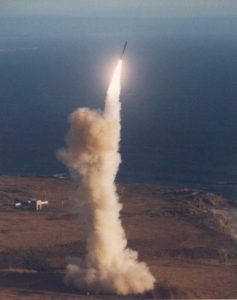With two years left in office, President Obama still has time to shape his legacy. Given the challenges presented by a Republican-controlled Congress, further legislative success is unlikely. But that still leaves lots of opportunities to act without Congress, as we are witnessing with climate change and immigration. There is another area where the president could enhance his legacy dramatically. It is also an issue to which President Obama has a deep personal commitment, where the authority is in his hands, and where he could direct changes that would make every American safer.
That area is nuclear weapons policy.
The issue’s importance to President Obama cannot be disputed. He entered office determined to address the nuclear threat. His April 2009 Prague speech offered compelling, visionary language, and clearly established the goal of the global elimination of nuclear weapons along with a host of interim steps. The following year saw progress, with Senate ratification of the New START arms control agreement with Russia, finalization of the Nuclear Posture Review setting out the administration’s new nuclear policies, and the first Nuclear Security Summit, the largest gathering of world leaders called by a U.S president since Roosevelt founded the United Nations.

An unarmed Minuteman ICBM launches in a test. Several hundred remain on hair-trigger alert, ready to launch in minutes.
However, these efforts—in particular the more-difficult-than-expected Senate battle over New START—diminished some of the enthusiasm of the administration. And Russia, even before the deeply troubling events in Ukraine, proved unwilling to engage on proposals for reductions below New START levels.
As a result, there has been little additional progress toward the president’s goals, with only minimal nuclear reductions made to date. For example, while in office, President George W. Bush cut over 5,000 warheads from the stockpile, but under the Obama administration, only 500 warheads have been retired so far.
It is not too late for significant progress. The president has the authority to make decisions about the size and operational status of the U.S. nuclear arsenal, and he should use it.
Indeed, by doing so, President Obama would be following in the footsteps of previous presidents. Both President George H.W. Bush and President George W. Bush slashed deployed and reserve levels of nuclear forces, without consulting Congress or negotiating with the Soviet Union or Russia. They simply determined that such reductions were in U.S. security interests, regardless of what any other country did. They eliminated thousands of nuclear weapons and a host of weapon types that were no longer needed.
Nuclear Reductions
President Obama has already stated that the United States could cut below New START levels while maintaining U.S. security. In June 2013, he announced that the Pentagon had concluded that the United States could safely reduce its nuclear forces to a level one-third below the 1,550 limit on deployed strategic warheads set out in the treaty—independent of what Russia does.
However, to date, the administration has indicated that it is seeking to make such reductions jointly with Russia. There is no reason those cuts could not be made now, and quickly. These extra weapons do not contribute to U.S. security and only add to costs.
And that is just one example of steps that President Obama could take in his final two years in office, steps that would reduce the nuclear threat, make every American safer, and lead to significant budget savings down the road.
Next Steps
Over the next several weeks, in a series of posts on AllThingsNuclear, I will be going into detail about this and other ideas that would have President Obama make real progress on an issue that initially seemed destined to be a major part of his legacy.
They include:
- Near-term reductions in deployed strategic forces to 1,000 weapons.
- “Safing” U.S. land-based nuclear-armed missiles, eliminating the possibility of their accidental or inadvertent launch.
- Cancelling the proposed new nuclear-armed cruise missile.
- Declaring that the sole purpose of U.S. nuclear weapons is to deter a nuclear attack on the United States and its allies.
